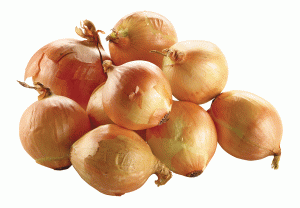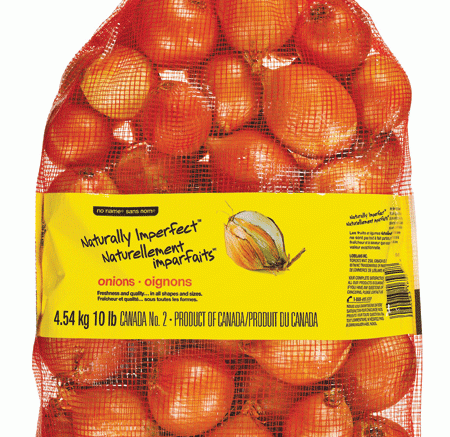By Andrew Hind
Ugly produce can mean a pretty profit for retailers.
On the surface, it sounds preposterous. When it comes to food, we’re naturally drawn to flawless fruit and vibrantly-colored vegetables. Only the pick of the crop, so to speak, will do.
And yet, a number of grocery chains across North America are unveiling lines of imperfect produce aimed at shoppers looking to save money on the skyrocketing price of fresh food.
“North American consumers shop with their eyes. A lot of produce goes to waste because we hold our fruit and vegetables to almost impossible standards. In the end, as much as 10 percent of a crop will go to waste due to simply cosmetic reasons,” explains Bryan Reeves, president of the New York State Vegetable Growers Association. “In Europe, outdoor markets and vendors are very popular so imperfect produce is more accepted. Maybe we’re moving in that direction, as well, with our interest in locally grown, organic food?”
In the U.S., fresh fruit and vegetables are held to impossibly high aesthetic standards by the U.S. Department of Agriculture (USDA). Green peppers have to be 90 percent green, for example, and carrots cannot have any forking. Other USDA standards are more scientific, taking into consideration maturity and shelf life. For example, the percentage of how red an apple should be is related to sugar content and how ripe it is.
Stores have raised standards even higher than the USDA, however. Large grocery chains entice shoppers to shop at their stores by stocking flawless produce under mist and flattering light. Stock that shows the slightest blemish is quickly removed from the shelves. Such standards create expectations among consumers of how their fruits and vegetables should look – expectations that mean a great deal of healthy produce is unsellable and therefore ultimately goes to waste.

Canadian grocer Loblaw recently added onions to its Naturally Imperfect line. Photo courtesy Loblaw Inc.
Grocers Gauging Interest in Imperfect Produce
However, this could be set to change as a number of retailers in the United States and Canada are showing consumers that looks aren’t everything.
Loblaw Inc., among Canada’s largest grocery chains, launched its Naturally Imperfect line last March, offering ugly apples and potatoes to Ontario and Quebec shoppers as part of a trial run that later expanded to select stores in other provinces. The company soon added more types of cheaper, but smaller, blemished, and misshapen produce including onions, carrots, mushrooms and peppers.
“When it comes to produce, Canadians know that beauty is more than skin deep,” says Ian Gordon, senior vice president, Loblaw Brands, Loblaw Companies Limited. “Our customers recognize they get the same flavor and nutritional benefits in spite of appearances. The positive response to our initial offering of apples and potatoes in Ontario and Quebec demonstrated the opportunity to expand the Naturally Imperfect line and offer more selection at a great price to more Canadian families.”
Produce included in the Naturally Imperfect program was previously used in juices, sauces or soups, or may not have been harvested due to its small size. With this program, Loblaw Companies is working to ensure farmers have a market for smaller, misshapen fruit and veggies so that it does not go to waste.
The uglier version of a fruit or vegetable costs up to 30 percent less than its good-looking counterpart, making it appealing to consumers whose budgets have been stretched by the rising price of fresh produce. Sticker shock is higher in Canada than the United States at the moment, due to the weak Canadian dollar, which undoubtedly explains much of the success Loblaw has experienced with its Naturally Imperfect line.
Consumers Driving the Trend
But by no means is the demand solely limited to Canada, nor is it even necessarily new.
“Imperfect produce has been an area of food waste the produce industry continues to pay attention to,” explains Kathy Means, vice president of industry relations, Produce Marketing Association. “In fact, baby carrots were born out of a desire to use carrots that were not perfect and would not meet the traditional fresh market specifications for whole carrots. Now, according to the Washington Post, baby carrots are 70 percent of U.S. carrot sales. Retailers and suppliers around the world are looking at ways to market imperfect produce.”
While it’s true that retailers and suppliers are searching for ways to market imperfect produce, ultimately it’s the consumer that’s driving the trend.
“Whether imperfect produce expands its market segment, or even endures, is up to the consumer. He runs the show and tells the retailer, through his shopping habits, what to stock and at what price point. If consumers ask for imperfect produce, you’ll start seeing more retailers providing it; they’ll be happy to, as long as there’s margin in it for them,” Reeves explains.
The largest U.S. grocer, Walmart, is keenly observing an innovative trial program at its UK chain Asda. In February 2015, Asda rolled out the “wonky vegetable box,” selling seasonal produce to feed a family of four for a week. Due to popular demand and positive social media response, Asda’s pilot expanded from 128 to 550 stores a month after its release. It’s been a roaring success, and Walmart is making tentative steps into the “ugly produce” field in its North American stores.
There are some blemishes in the history of selling imperfect produce, however. Two California chains, Raley’s and Andronico’s, both of which enthusiastically launched ugly produce pilot programs, have recently discontinued them. Were they premature in cutting short their programs? Time will tell.
“I see selling imperfect produce as a good thing all round,” Reeves shares. “For farmers, it allows them to move more product and generate more revenue. It also makes fresh fruit and vegetables more affordable for lower-income families, which is a growing concern in America – it’s good for the health of our citizens. Finally, making produce more affordable may make people who don’t normally eat vegetables into vegetable-eaters, creating long-term return on investment for retailers.”
It remains to be seen whether consumers will fully embrace ugly duckling produce in the long run, or whether it’s simply a trend that’s reflective of current economic conditions. For the moment, many large North American retailers are willing to bank that this is no passing fancy.
Originally published in Onion World


